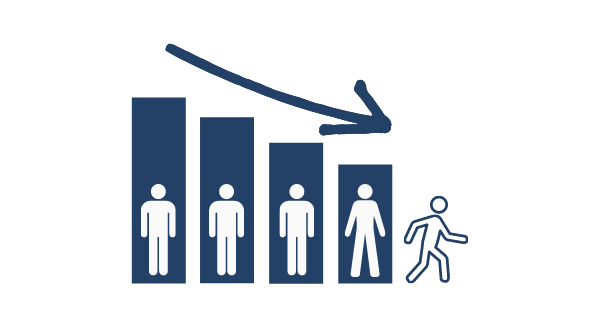
BLOG POST
How to reduce involuntary customer churn
When people talk about customer churn, they’re usually talking about voluntary churn, which happens whenever a customer decides to cancel their subscription or not renew their contract. But there is another type ‒ involuntary churn, which happens whenever a subscription or contract is canceled because the customer’s payment couldn’t go through.
Involuntary churn can account for as much as 25% of all churn. Because it tends to happen slowly sporadically over time, it often flies under the radar. Though it’s a significant drain on revenue, businesses may not recognize the problem until it becomes obvious and not much can be done about it. Customers who leave involuntarily, due to a declined credit card, for example, may not come back without an aggressive “win back” marketing campaign, costing your business even more money.
Involuntary churn can affect any of your customers ‒ from your biggest to your smallest ‒ and minor efforts to prevent it are your best defense against losing them entirely or investing heavily to win them back.
Four reasons a customer might churn involuntarily:
- Their credit card has expired
- They’ve reached their spending limit
- An error caused a payment failure
- The transaction was mistakenly flagged by their fraud department
How to address the number one reason that customers churn
Credit cards need to be renewed every three years, which means around a third of your customers are in danger of churning involuntarily. On the surface, this might not sound serious. It’s an administrative snag, after all. If the customer isn’t unhappy, they can update their card and rejoin.
And while many customers do rejoin, some don’t. Involuntary churn creates a new point of friction. For one thing, customers may not realize what the problem is. In some cases, they assume it’s a technical issue on your end and call to complain. Ironically, the more they rely on you, the more frustrating the disruption will be.
In other cases, re-entering their information triggers a new purchase decision. Customers reconsider the value of your product, which makes this the perfect moment to reach out to them with targeted messaging and offers that highlight your value and benefits.
Stop involuntary customer churn before it happens
Proactive outreach, such as an email reminder, is a simple and effective way to get ahead of the situation. It gives your customers a chance to renew their payment details before a transaction is declined. It’s also an opportunity to remind the customer of the value you provide. Depending on your business, you may want to offer an upgrade or discount as well. Or you may need to remind your customers of the penalties for failed, missed, or late payments, to encourage them to update their profile quickly.
Multi-touch approach
Adopting a multi-touch strategy is one of the best ways to motivate customers. For example, you can start by sending them a friendly nudge 60 days before the expiration date. Then, as the expiration grows closer, you can increase the urgency with specific messaging, including incentives. Close to the deadline, you may want to change the messaging again, reminding them of the penalties or repercussions of a failed payment: “your account will be deactivated” or “your contract will add a $25 late fee for all missed payments.”
Chargezoom can help you manage all these situations with automation. We can monitor the expiration dates and reach out beforehand, to help eliminate involuntary churn.
- Stripe. Subscriptions and invoicing for ambitious businesses.
Recent Posts
Categories
- accounting (6)
- accounting automation (40)
- Business (30)
- business coupons (1)
- business discounts (3)
- Certification (1)
- competitors (1)
- Compliance (2)
- CPA (6)
- Credit Cards (6)
- customer billing (2)
- Entrepreneur (13)
- Integrations (19)
- ISO (15)
- ISV (14)
- Marketing (8)
- Merchant Processing (19)
- Partners (13)
- Press Releases (4)





